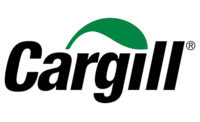Editor’s Note: This story originally published in Refrigerated & Frozen Foods magazine, a sister publication to The National Provisioner in BNP Media’s portfolio.
www.refrigeratedfrozenfood.com
Rail and intermodal is a key ingredient to nearly any transportation strategy. Figuring out how to get bulk product from Point A to Point B safely, efficiently and cost effectively takes time, technology and due diligence.
So, when the U.S. government shut down for 16 days, uncertainty loomed over the food industry, as many agencies and food processors were unsure as to how to regulate freight movement. According to the United States Department of Transportation, Washington, D.C., consistency may be the biggest threat of both a shutdown and further sequestration. But, it’s also the consistency that keeps America’s supply chains moving.
Last year, intermodal accounted for 22.7% of revenue for major U.S. railroads, second only to coal among all rail traffic segments, reports the Association of American Railroads, Washington, D.C. Intermodal allows railroads, ocean carriers, trucking companies and customers to take advantage of the best attributes of various transportation modes to yield an efficient and cost-effective freight movement.
Meanwhile, domestic container volume continued its steady performance in the second quarter of 2013 with 9% year-over-year gains, largely attributed to a strong big box segment, with total intermodal traffic rising by 2.4% for the quarter, according to an intermodal market trends and statistics report published by the Intermodal Association of North America (IANA), Calverton, Md.
“Based on intermodal volume trends over the last several years, we expect domestic intermodal to continue its steady growth with slightly higher than usual YTD increases from now through October (domestic containers 10-12%), and international volumes to grow at a brisker pace than the first half of the year (2-3%),” says Joni Casey, president and CEO of IANA.
The Southeast region was the clear leader in the second quarter of 2013, according to IANA’s market trends data, with intermodal increasing 8.1% compared to 2012. Intra-southeast shipments bested the national average, posting an impressive 11.1% in Q2.
Regional traffic in the Southeast United States grew 8.1% compared to Q2 2012, with domestic container volume leading the way up 12.4%, surpassing the industry average of 9% growth. Southeast international intermodal also bested industry statistics with a 6.7% gain compared to a 1.3% drop nationwide.
Ports continue to play a big role in the strength and growth of intermodal.
“We see large volumes of fresh and frozen beef and poultry year-round and seasonally large volume of citrus products. Volumes have remained steady, but issues with the economies in Asia plus competition from Australia and Mediterranean growing areas are always present. Low freight rates and a good U.S. dollar exchange rate also help our trade,” says Phillip Sanfield, director of media relations for the Port of Los Angeles, San Pedro, Calif.
Keeping threats at bay—new technologies pave the way for a safer, cleaner tomorrow
Despite the many challenges today’s food industry faces, there is an increase in refrigerated and frozen food products moving by both carload and intermodal. That’s because several rail and intermodal providers are moving forward with automated developments and cutting-edge improvements designed to keep threats at bay, while conserving energy.
“The newest trend pertaining to rail is the coming on line of refrigerated boxcar services and adding supply chain flexibility that intermodal does not have,” says Jason Spafford, vice president of business development for McKay TransCold, LLC, Edina, Minn.
McKay TransCold launched TransCold Express, a 50-car refrigerated train that offers a bi-directional service between Selma, Calif., and Wilmington, Ill. The service moves refrigerated and frozen consumer goods and produce by the carload, truckload or LTL via BNSF’s newly refurbished fleet of refrigerated boxcars. Each refrigerated boxcar holds up to four truckloads. Plus, the train is said to be 70% greener compared to trucks with one railcar, equaling up to four truckloads.
“[We’ve also been] developing a patent-pending racking system to safely double stack pallets, so nothing is floor loaded and loads only require minimal dunnage because the racking system creates a very secure environment. Refrigerated boxcars also have new cellular refrigeration tracking, so we know almost instantly in our control center if there is a refrigeration unit issue,” says Spafford. “Rail has come a long way in the past 20 years. I think the biggest challenge is to get people to understand how it can be used effectively and it’s never a one thing or another assessment. Understanding when to use rail—intermodal or boxcar—and when to use truck and the combination is going to give companies a leg up in the future.”
BNSF Railway Co., Fort Worth, Texas, leverages the latest technology to improve facility throughput and meet customer expectations.
For example, fuel-efficient fleets of road locomotives mean a BNSF train can move one ton of freight, on average, almost 500 miles on a single gallon of diesel fuel.
“Multiply that by the equivalent of 280 trucks on a large double-stack intermodal train and it’s easy to see why shipping by rail is the most fuel-efficient and environmentally preferred form of land transportation,” says Katie Farmer, group vice president, consumer products.
BNSF’s wide-span electric cranes produce zero emissions on-site and significantly reduce the number of trucks needed to move containers within the rail yard. They also generate electricity while they work, which recharges internal batteries and conserves electricity.
Automated gates are used at nine of BNSF’s intermodal facilities, says Farmer.
“Digital cameras record images of containers, chassis, tractors and unit numbers as they enter those facilities,” she adds. “In addition, drivers are identified using a biometric system. These new gates have increased facility throughput and reduced truck-idling time and air emissions by 50%.”
Just this summer, BNSF launched a new intermodal app for mobile devices to enhance the ability to plan and execute intermodal shipments.
“Technology advancements on refrigeration units, including GPS tracking and remote temperature monitoring, have helped reduce any issues that may arise,” Farmer says.
To keep up with the demand of making rail more environmentally friendly, Union Pacific (UP), Omaha, Neb., unveiled Arrowedge, piloting the employee-designed aerodynamic technology for fuel and locomotive emissions reductions on double-stack intermodal freight trains.
A double-stack intermodal train accommodates freight containers placed two-high, one on top of the other, for better ride quality and rail car utilization. Positioned on top of the first freight container, the 48-foot Arrowedgehas a tapered body that allows air to flow more easily around the train’s top front-most containers. This reduces aerodynamic drag for more efficient transport of customers’ goods and decreases the amount of locomotive power required to propel the train. UP expects to introduce the technology into double-stack train service between Joliet, Ill., and Long Beach, Calif.
“In 2012, the refrigerated boxcar shipments that we handled for our customers reduced their overall carbon footprint by 395,000 metric tons. That savings is equivalent to the carbon removed by over 84,000 acres of U.S. forests,” says Nick Langel, product manager refrigerated products for UP.
Whether it’s to stay ahead of looming governmental obstacles or to keep pace with customers’ demands for a cleaner, more efficient supply chain, intermodal continues to become more competitive and reliable each year.
“As fuel prices increase, intermodal becomes even more economical than before. With billions of dollars invested in rail from the ports to the inland rail hubs, service is efficient and on time, helping it be a better competitor to over-the-road trucks,” says Spafford.






Report Abusive Comment